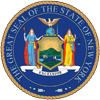What is SEQR?
The New York State Environmental Quality Review Act (SEQR) requires all state and local government agencies to consider environmental impacts equally with social and economic factors during discretionary decision-making, which means that these these agencies must assess the environmental significance of all actions they have the discretion to approve, fund, or directly undertake. SEQR requires the agencies to balance the environmental impacts with social and economic factors when deciding to approve or undertake an action, and the sponsoring or approving governmental body is required to identify and mitigate any significant environmental impacts resulting from the action.
To Whom Does SEQR Apply?
SEQR applies to actions of all state or local government agencies including districts, special boards, and authorities. An action is subject to review under SEQR if any state or local agency has authority to issue a discretionary permit, license, or other type of approval for that action. SEQR also applies if an agency funds or directly undertakes a project, or adopts a resource management plan, rule or policy that affects the environment.
How Does SEQR Work?
The SEQR process is self-certifying, meaning that each state and local government agency is responsible for ensuring compliance with SEQR requirements. The first step in the SEQR process is to classify the action to determine the level of review required. This is followed by completion of an Environmental Assessment Form (EAF) to determine the potential significance of the action's environmental impacts. Part I of the EAF is completed by the project applicant or sponsor, while Part II is completed by the lead agency, which is the governmental body undertaking the review. If it is determined that the action will not result in any potentially significant adverse environmental impacts, then a determination of nonsignificance or Negative Declaration is prepared and the SEQR process is complete. If it is determined that an action will have potentially significant adverse environmental impacts, then an Environmental Impact Statement (EIS) must be prepared. The SEQR process uses the EIS to examine ways to avoid or reduce adverse environmental impacts related to a proposed action, which includes an analysis of all reasonable alternatives to the action. The process of preparing an EIS involves thorough examination of potential impacts, public review and comment, and an issuance of findings.
More Information on SEQR and Forms
While the New York State Department of Environmental Conservation has no authority to review the implementation of SEQR by other agencies, it is responsible for issuing regulations and providing guidance on the SEQR process. More information on the SEQR process and SEQR Forms can be found on the Department of Environmental Conservation's website via the links below.
SEQR - Environmental Impact Assessment in New York State
Stepping Through the SEQR Process
New York State EAF Mapper
List of SEQR Publications
SEQR Forms

